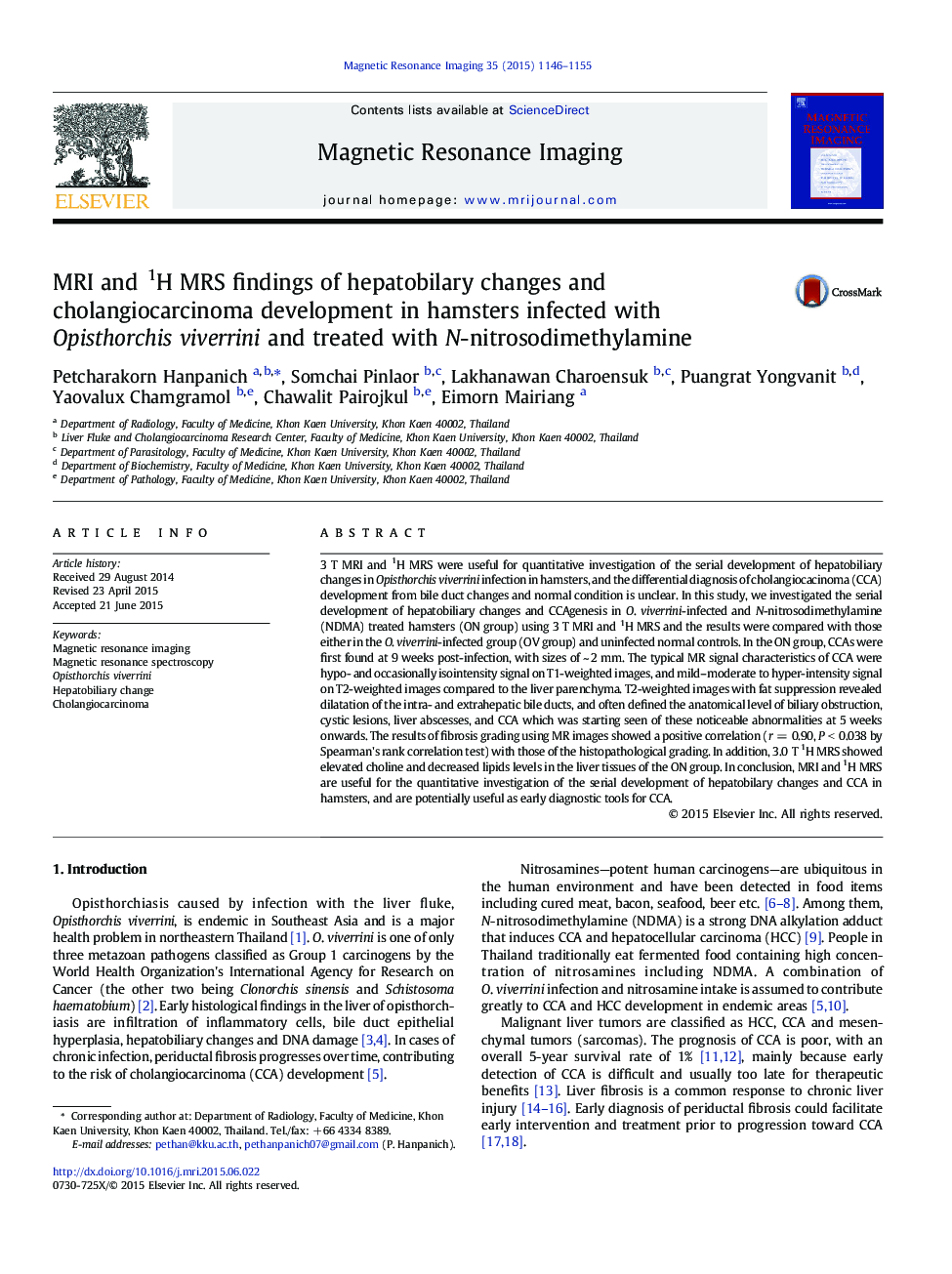| Article ID | Journal | Published Year | Pages | File Type |
|---|---|---|---|---|
| 10712469 | Magnetic Resonance Imaging | 2015 | 10 Pages |
Abstract
3 T MRI and 1H MRS were useful for quantitative investigation of the serial development of hepatobiliary changes in Opisthorchis viverrini infection in hamsters, and the differential diagnosis of cholangiocacinoma (CCA) development from bile duct changes and normal condition is unclear. In this study, we investigated the serial development of hepatobiliary changes and CCAgenesis in O. viverrini-infected and N-nitrosodimethylamine (NDMA) treated hamsters (ON group) using 3 T MRI and 1H MRS and the results were compared with those either in the O. viverrini-infected group (OV group) and uninfected normal controls. In the ON group, CCAs were first found at 9 weeks post-infection, with sizes of ~ 2 mm. The typical MR signal characteristics of CCA were hypo- and occasionally isointensity signal on T1-weighted images, and mild-moderate to hyper-intensity signal on T2-weighted images compared to the liver parenchyma. T2-weighted images with fat suppression revealed dilatation of the intra- and extrahepatic bile ducts, and often defined the anatomical level of biliary obstruction, cystic lesions, liver abscesses, and CCA which was starting seen of these noticeable abnormalities at 5 weeks onwards. The results of fibrosis grading using MR images showed a positive correlation (r = 0.90, P < 0.038 by Spearman's rank correlation test) with those of the histopathological grading. In addition, 3.0 T 1H MRS showed elevated choline and decreased lipids levels in the liver tissues of the ON group. In conclusion, MRI and 1H MRS are useful for the quantitative investigation of the serial development of hepatobilary changes and CCA in hamsters, and are potentially useful as early diagnostic tools for CCA.
Keywords
Related Topics
Physical Sciences and Engineering
Physics and Astronomy
Condensed Matter Physics
Authors
Petcharakorn Hanpanich, Somchai Pinlaor, Lakhanawan Charoensuk, Puangrat Yongvanit, Yaovalux Chamgramol, Chawalit Pairojkul, Eimorn Mairiang,
